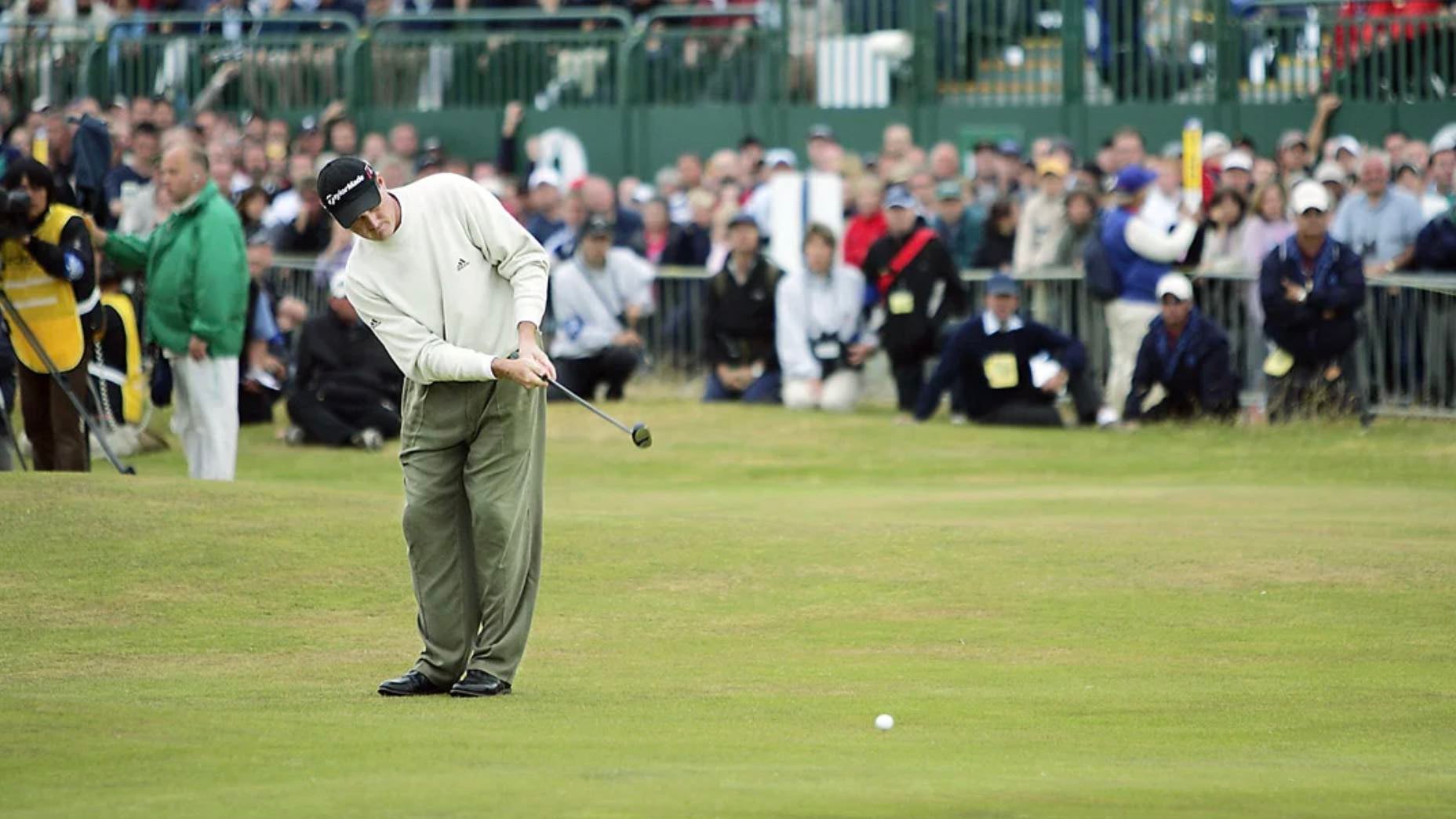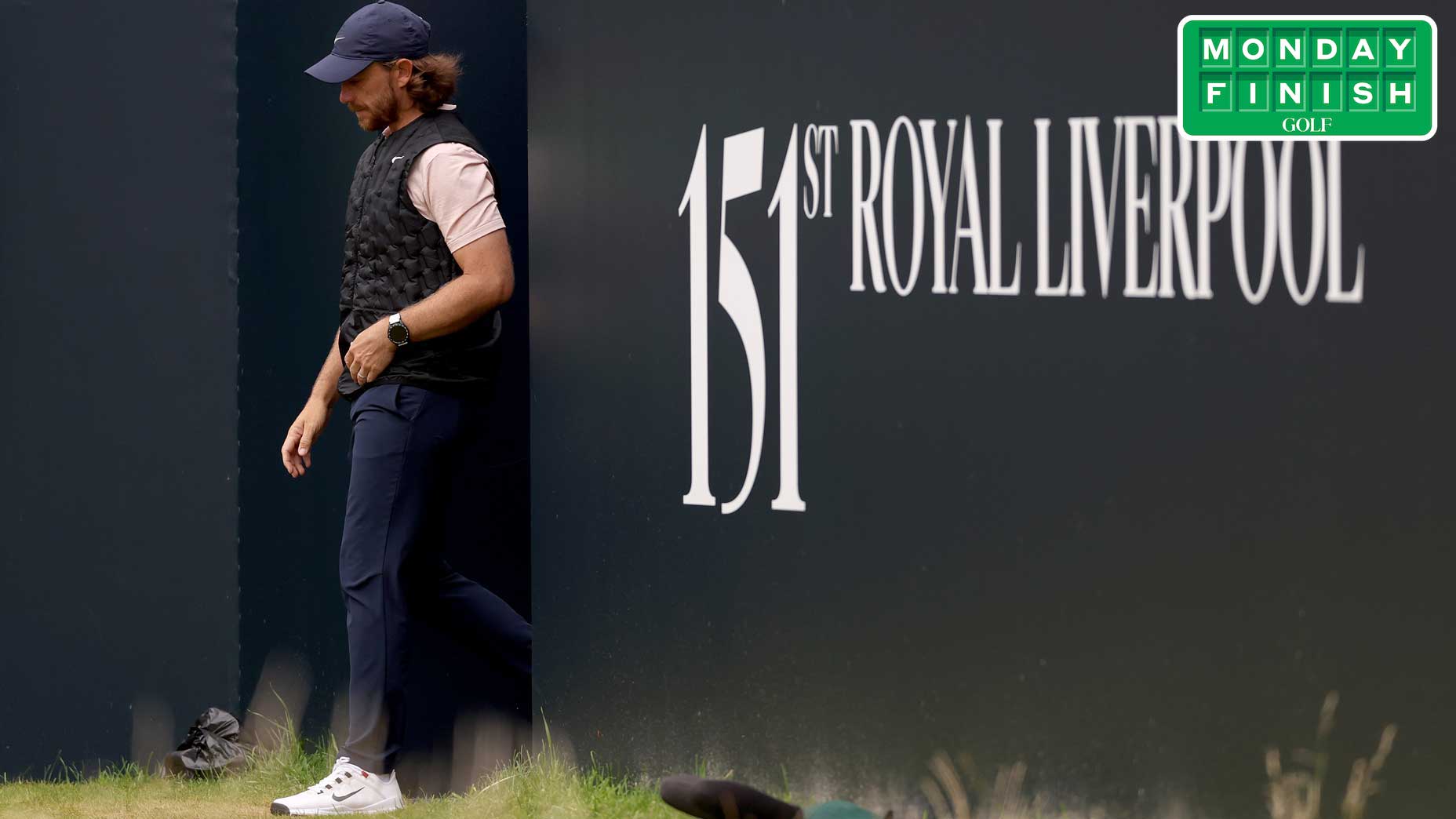Lessons from Hoylake: A hidden golfing gem, a contentious par-3, the next Brian Harman and more

From top right, clockwise: Royal Liverpool's 17th; Open winner Brian Harman; Wallasey Golf Club; and the Tasting Bar and Kitchen in Hoylake.
From top right, clockwise: Getty (2), Josh Berhow, Courtesy
At the 2023 Open Championship, Brian Harman triumphed for his first major title of his career, but there was lots more to remember beyond the main headlines. Here, our on-site staffers clean out their notebooks in our Lessons from Hoylake.
Add this to your bucket list
By James Colgan
A short drive up the road from Hoylake is a course soaked in golf’s elixir of life. The shame of it all? Hardly anyone on this side of the pond has heard of it.
Wallasey Golf Club is perhaps best known to the golf world for an early 20th century member named Frank Stableford — a.k.a., the guy who invented Stableford scoring. As legend has it, Stableford was hacking his way around Wallasey one day when he figured there ought to be a more enjoyable way to score golf. He got to thinking and, after a moment, realized that assigning point values to hole scores was the perfect solution.

Today it is hard to get more than a handful of footsteps at Wallasey without a reminder of Stableford’s contributions to the game. But if we’re being honest, even that hook undersells Wallasey as a golf destination.
Early in Open week, we arrived to find the course sun-drenched and properly gusty; ideal conditions for a links golf afternoon. The round that followed was nothing shy of biblical.
The course was simply wonderful. A wide variety of funky and quirky holes weaved through a dramatic, seaside dunescape. A twisting routing (and shifting winds) kept the shot variety constantly changing. Walking paths were mowed wide enough for golfers to walk alongside one another, like green freeways. Plaques next to four of the tee boxes revealed Old Tom Morris (yes, that Old Tom Morris) had designed four of the course’s quirkiest greens.
We didn’t finish on account of an event happening on the 18th (a story for another day), but it didn’t quite matter. It was one of the rounds of my year, and a destination I’ll be recommending to golfers traveling to the UK for the Open for years to come.
‘The next Brian Harman’
By Josh Berhow
Throughout his entire 2023 Open Championship triumph, Brian Harman looked surprisingly calm. He showed little emotion until the end. Across the Atlantic, the same can’t be said for everyone.
“They are like your own kids. You are still living and dying with every shot just like I did as a coach,” said Chris Haack, the Georgia men’s golf coach, who was also leading the Bulldogs years ago when Harman and several other Tour pros (like Brendon Todd, Russell Henley and Chris Kirk) were coming through. “Every putt they make I probably fist pump more than they did.”
Haack watched nearly every shot of The Open on Sunday. He had to leave to catch a flight after Harman hit his tee shot on the par-3 17th, but the damage was already done at that point anyway. Harman two-putted for par — he did that a lot last week — and went to the 18th tee with a six-shot lead. Five shots later, he won The Open.
Haack was obviously giddy over Harmon’s victory, but he was also proud of a post-round interview he saw a day or two earlier. Harman was asked about nerves, and he admitted they were of course there — you just have to battle them and overcome them. Haack appreciated the honesty.
While Haack and Harman don’t talk regularly, they remain close. They see each other at the occasional golf camp and are still comfortable enough to stay in touch. Not long ago, for example, a random and funny moment found Haack and one of his players discussing the size of a moose versus an elk. They were trying to figure out, for no reason in particular, which one was bigger.
“I know,” Haack thought, thinking of avid outdoorsmen he’s coached. “Let’s call Brian. He’ll know.”
When reached on Sunday night to chat about Harman, Haack was now in a rental car. His destination? The same tournament Harman won back in 2003.
“I’m going to the U.S. Junior now,” Haack said, “and I’m going to try and find the next Brian Harman.”
The joyful quirks of Open Championship week
By Dylan Dethier
My week in Wirral began at the Manchester airport, where I and my colleague Josh Berhow waged war against the system for a while in an effort to recover the golf clubs of our other colleague, Darren Riehl, who’d arrived a couple of days earlier.
The clubs were there. We knew they were there from an AirTag in the bag. But it was still nearly impossible to crack through to get to someone who could actually make them accessible. The U.K.’s insistence on separating the baggage claim area from the rest of the world only made this a thornier problem.
If you’re rolling your eyes and saying OK, Dylan, get to the point, then I agree with your instincts. There’s literally nothing more eye-rollable than media people talking about their luggage. But the two-hour acquisition of a bag that’s 30 feet away on the other side of a wall is metonymic for the Open Championship experience.
Part of the joy of the week is seeing seaside U.K. towns positively overrun with golf-mad spectators. My first Open was in Portrush in 2019 on the tip of Northern Ireland; I’m fairly sure there’d never been that many people in that town in its entire history. St. Andrews last year was my next Open; that’s a town with more complete infrastructure and better familiarity with the demands of hosting an Open, but still — it was delightfully overwhelmed. Fans streamed from the course into the streets and took over outside the pubs, soaking in the peak moments of a U.K. golfing summer.
Royal Liverpool is tucked between two towns (two train stops) with West Kirby to the south and Hoylake to its north, and its proximity to Liverpool meant there wasn’t quite the same level of system overload. But it still existed. The pubs were overrun. Fans (and players, and media) flocked to the few spots that would serve you food after 9 p.m. Everyone seems excited to have you in town — but not quite excited enough to keep their kitchen open. Fair play. (And shoutout to local hotspots Tasting Kitchen and Domino’s, each lifesaving and delicious in its own way.) There’s an energy to it that I’ve still not quite felt anywhere else in the golfing world.
It’s some cross between a golf convention and the Quidditch World Cup. There’s a shared joy in the effort it takes to get there and the world you’ve entered once you arrive. And it helps if your luggage makes it, too.

Rewinding our thoughts on “Little Eye”
By Sean Zak
It was already obvious on Monday afternoon before The Open, when the most-packed grandstand at Royal Liverpool was not the 1st, nor the 18th, but rather the stand along the 17th green. Everyone was curious how this devious little par-3 would look, feel, play, you name it.
Jon Rahm splashed bunker shots from the cavernous trap to the right of the green. The first clanked thinly off the flag and off the back of the putting surface. In a few moments, Joe Skovron, Tom Kim’s caddie, paced around the green and clarified his strategy aloud: Don’t go right, don’t go left, don’t be short. Missing on this hole was going to be chaotic.
On paper, the hole named “Little Eye” seemed like a perfect test for the best players in the world. A tiny one-shotter that makes professionals and their bag-carriers uncomfortable. But in a matter of 24 hours, a couple of caddies had already sounded off to the press about its shortcomings. A couple of players followed suit. Media picked up on the angst and poured kerosene on this idea before a single par was made in the tournament.
This isn’t a proper test. This is a horrible hole for the membership. What are they trying to accomplish here? They were all fair opinions, made in the moment. They were reactive, maybe even knee-jerk. But they were also three years too late.
Anyone who really wanted to dislike the newest hole at RLGC should have responded to it in 2020, when it was announced in a press release alongside numerous other changes to this 152-year-old golf course. The entire history of Royal Liverpool is about changes, both big and small, but this one was sneakily made in conjunction with lengthening its neighbor, the 18th hole.
Two tees were added to the 18th, in the northwest corner of the property, with nowhere to put them. Nowhere but on the ground previously owned by what was the 15th green. The goal was obvious: make the 18th longer. Make it a difficult driving hole, forcing players to hit the longest club in their bag and hit it well if they wanted a finishing birdie. But adding length to the 18th was only necessary because of golf’s most modern dilemma. How far the ball travels and how efficiently modern equipment can launch it leads to an unsustainable borrowing exercise. In order to make one hole more difficult, on a fixed amount of land, they had to steal from another hole. Flipping around a par-3 to play uphill at the Irish Sea was an attempt to create excitement, but also the most creative way of maximizing space for the 18th.
So while the 17th was marred in consternation from grumpy caddies and players, the conclusion on the 18th was quietly just fine. The 609-yard par-5 played to an average of 4.978 strokes, or 0.44 strokes higher than 2014. That’s an improvement for the course that was concerned about new scoring records being broken. Great success, right? It’s hard to deem it a total success when immediate reports this week said change would already be coming for the 17th hole.
Whether or not that will become true, it remains fascinating how we talk about golf course architecture built to test the best players in the world and how much we allow those best players to weigh in on the process themselves. We tend to get stuck where we were last week, embroiled in a discussion about course manipulation gone wrong when we should be talking about course manipulation as a last stand.











